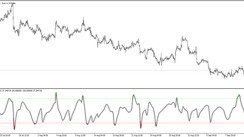Introduction: An Unraveling World of Exchange Traded Funds
In the realm of financial markets, Exchange Traded Funds (ETFs) stand out as an impressive invention. These financial instruments, bearing numerous perks such as bountiful liquidity, low expense ratios, and a gamut of investment choices, present themselves as a perfect match for novice investors. Their flexibility and availability also make ETFs the prime candidates for myriad trading and investment strategies, effectively opening doors for beginners into the world of investing.
ETFs capture broad indices or sectors within a single security, bringing about an opportunity to invest in diversified sectors without owning every single stock within an index. This allows investors, particularly novices, to engage with ETFs that track everything from traditional assets to more intricate and exotic financial instruments, including leveraged investments and inverse ETFs. Leveraged ETFs provide returns equivalent to a multiple of the underlying index, whereas inverse ETFs yield increased value when the index falls.
The innate nature of ETFs opens the door for numerous strategies to maximize investing benefits. In the following sections, we'll delve deeper into the seven most potent ETF trading strategies that beginners can leverage to scale the wall of investing.
1. Dollar-Cost Averaging: A Strategy Anchored on Consistency
Dollar-Cost Averaging stands as one of the simplest yet most effective strategies for beginner investors. This strategy espouses a regular investment of a fixed-dollar amount into an asset, irrespective of the asset's fluctuating price. Young investors, typically those fresh into the workforce with a steady stream of income, are best positioned to adopt this approach.
By funneling a fixed amount from their monthly savings into an ETF or a group of ETFs instead of stashing it into a low-yielding savings account, beginner investors can begin their investment journey with ease.
The Value of Dollar-Cost Averaging
-
Discipline: Dollar-Cost Averaging fosters an invaluable habit of disciplined saving. Following the wisdom of financial planners, "paying yourself first" by saving consistently becomes a cornerstone of effective wealth management.
-
Averaging out costs: Investing a fixed-dollar amount in an ETF every month, you accumulate more units when the ETF price is low and fewer units when the price is high. This technique helps average the cost of your holdings, offering you a smooth ride amid the roller-coaster world of investing. Persistence in this discipline over time can lead to impressive financial growth.
To illustrate this, let's take an example. Imagine if you had invested $500 every month from September 2012 to August 2015 in the SPDR S&P 500 ETF (SPY), an ETF that mirrors the S&P 500 Index. In September 2012, with SPY units trading at $136.16, your $500 would have bought you 3.67 units. Fast forward to three years later, when the units were trading close to $200; your monthly $500 investment would have secured you 2.53 units. Over this three-year period, you would have accumulated a total of 103.79 SPY units, worth $21,735 by August 2015. This translates to an average annual return of nearly 13%.
2. Asset Allocation: Diversification Tailored to Your Needs
Asset Allocation, the strategy of dividing a portfolio across various asset categories like stocks, bonds, commodities, and cash, stands as an incredibly powerful tool for investors. ETFs, with their low investment thresholds, make implementing a basic asset allocation strategy accessible for a beginner, tailored to their investment timeframe and risk appetite.
Navigating Asset Allocation as per Life Stages
A young investor in their 20s might be inclined to invest 100% in equity ETFs, due to their extensive investment time horizons and high tolerance for risk. As life progresses and significant milestones like starting a family or buying a house start to appear, their investment strategy may evolve. This could involve moving towards a less aggressive mix, say, 60% in equity ETFs and 40% in bond ETFs.
3. Swing Trading: Leveraging the Ebb and Flow of Markets
Swing trading seeks to capitalize on sizeable fluctuations in stocks or other assets like currencies or commodities over a period of a few days to weeks. Unlike day trades, these are not typically left open overnight.
The diversification of ETFs and their tight bid/ask spreads are features that lend well to swing trading. Further, with ETFs spanning different investment classes and a wide spectrum of sectors, beginners can opt to trade an ETF that aligns with a sector or asset class where they possess specific knowledge or interest.
Swing Trading with ETFs: Real-world Examples
For instance, an individual with a technological background might have an edge when trading a technology ETF like the Invesco QQQ ETF (QQQ), which tracks the Nasdaq-100 Index. Similarly, a novice trader who keeps a close eye on the commodity markets might prefer to trade one of the many commodity ETFs available, like the Invesco DB Commodity Index Tracking Fund (DBC).
One significant advantage of ETFs is that, being baskets of stocks or other assets, they are likely to not have the same degree of price volatility as individual stocks during bullish markets. Conversely, their diversification also shields them from experiencing large losses during a market downturn, offering some level of protection against capital erosion—an important consideration for beginners.
4. Sector Rotation: Timely Shifts for Enhanced Returns
Sector rotation is another viable strategy for beginner investors, facilitated by the easy access and flexibility of ETFs. This strategy involves moving investments from one sector ETF to another based on the stages of the economic cycle.
The Power of Sector Rotation: An Illustration
Imagine an investor has holdings in the biotechnology sector through the iShares Nasdaq Biotechnology ETF (IBB). Upon deciding to take profits from this ETF, they might opt to rotate into a more defensive sector, like consumer staples, through The Consumer Staples Select Sector SPDR Fund (XLP).
5. Short Selling: Cautious Steps Towards Advanced Techniques
Short selling, the act of selling a borrowed security or financial instrument, can be a risky strategy for most investors, especially beginners. However, if executed judiciously, short selling through ETFs could be less risky than shorting individual stocks, primarily due to a lower risk of a short squeeze—a scenario where a heavily shorted security surges in price. Moreover, the cost of borrowing for ETFs is significantly lower compared to trying to short a high-interest stock, a factor that beginners should bear in mind.
Prudent Short Selling with ETFs
Short selling through ETFs also enables a trader to exploit a broad investment theme. An advanced beginner, who is aware of the risks associated with shorting, might want to initiate a short position in the emerging markets through the iShares MSCI Emerging Markets ETF (EEM). However, it's crucial for beginners to steer clear of double-leveraged or triple-leveraged inverse ETFs, as the risk involved in these ETFs is significantly higher.
6. Seasonal Trend Betting: Riding the Waves of Market Patterns
ETFs offer a great avenue for beginners to cash in on seasonal trends in financial markets. Two such prevalent seasonal trends include the "sell in May and go away" approach and the "January effect."
Unearthing Seasonal Trends with ETFs
For instance, a beginner trader could bet on the seasonal trend in natural gas prices. If history is any indication, natural gas prices typically spike in the winter months as demand for heating fuels peaks. During this period, a trader could buy a natural gas ETF like the United States Natural Gas Fund (UNG). However, like all strategies, seasonal trend betting can be unpredictable and thus, stop losses should be used to limit the potential for large losses.
7. Hedging: An Ounce of Prevention
At times, a beginner investor might need to protect a substantial portfolio against downside risk. ETFs, with their diverse range of offerings, provide beginners with an easy and efficient method to hedge their investment.
Hedging Options for the Cautious Investor
If an investor has a large exposure to a specific sector, they could use a sector-specific inverse ETF to hedge their position. For instance, an investor with a significant holding in technology stocks could hedge their position using the ProShares UltraShort QQQ ETF (QID), which offers twice the inverse daily performance of the NASDAQ-100 Index.
Conclusion: The ETF – An Investment Swiss Army Knife
With their flexibility, low costs, and breadth of offerings, ETFs are an ideal tool for novice investors looking to gain a foothold in the world of investing. Adopting strategies like dollar-cost averaging, asset allocation, swing trading, sector rotation, short selling, exploiting seasonal trends, and hedging can not only provide a beginner with substantial returns over time, but they can also equip them with the knowledge and experience needed to navigate the more intricate aspects of investing.





